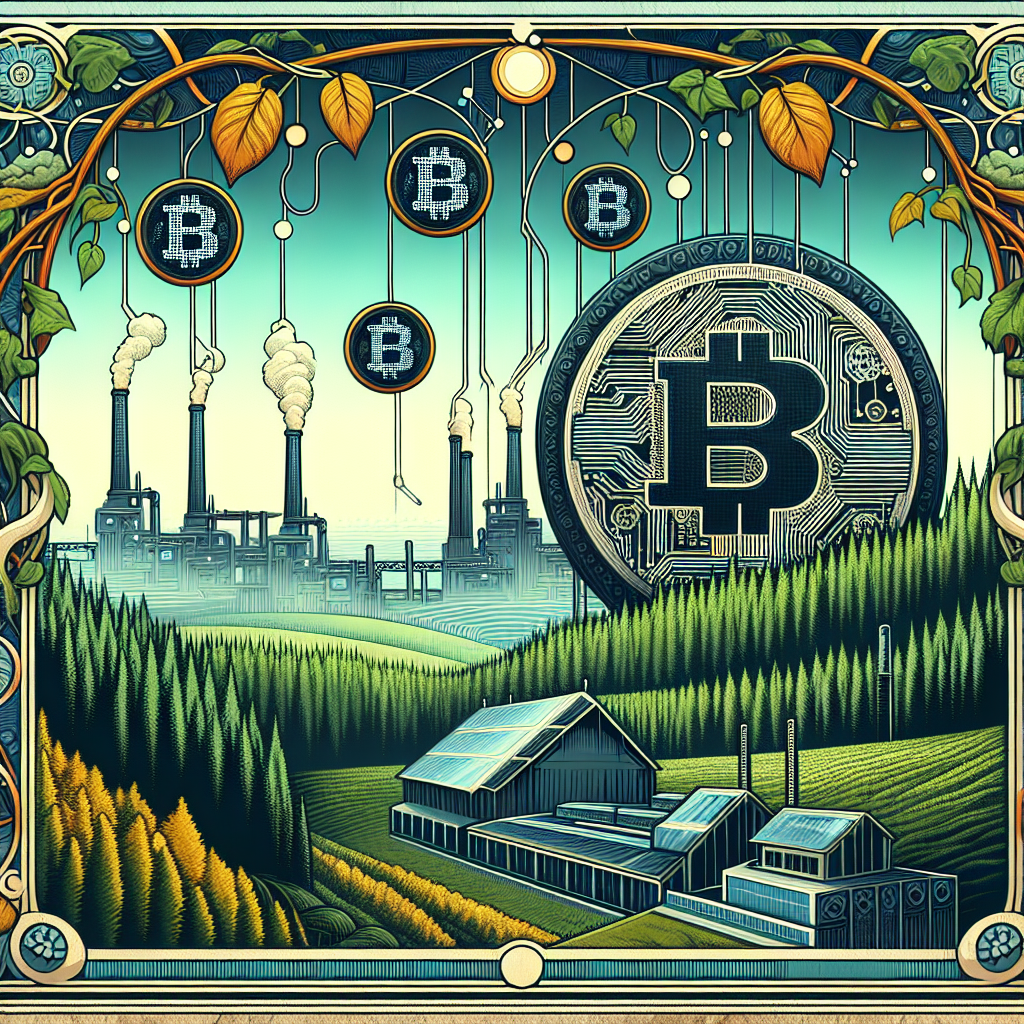The Carbon Credit Conundrum: Can RedBelly and CarbonHood Actually Deliver on Their $70B Tokenization Promise?

In what might be either the most ambitious climate innovation or the grandest greenwashing scheme of our time, RedBelly Network and CarbonHood have announced a partnership to tokenize an initial 950 million tons of carbon credits valued at approximately $70 billion. The companies have even grander ambitions: bringing up to 32 billion tons of carbon credits—valued at a staggering $2 trillion—on-chain by the end of 2025.
As someone who's watched the carbon market evolve from obscure environmental mechanism to buzzword-laden blockchain opportunity, I find myself simultaneously intrigued and skeptical. After all, the entire voluntary carbon market was valued at just $1.7 billion in 2024. So how exactly does one tokenize $70 billion of something that apparently doesn't exist at that scale?
The Promise: A Revolution in Carbon Markets
The partnership brings together three key players:
- CarbonHood: The carbon credit creator, verifier, and offset enabler managing assets across 15 separate registries globally.
- RedBelly Network: The blockchain infrastructure provider offering fast, secure, and regulatory-compliant tokenization capabilities.
- Blubird: The asset tokenization platform supporting transparency and market efficiency.
Their vision is compelling: transform a fragmented, opaque market plagued by verification issues into a transparent, scalable digital marketplace for environmental assets. By leveraging RedBelly's formally verified blockchain with its embedded user identity, zero-knowledge proofs, and regulatory compliance features, the consortium promises to solve the most persistent problems in carbon markets.
As Peter Carbon, an imaginary but entirely plausible executive might say: 'We're not just tokenizing credits; we're tokenizing trust.'
The Reality Check: Carbon Markets' Fundamental Problems
Before we get too excited about blockchain solving all our carbon woes, let's examine the fundamental challenges that have plagued carbon markets since their inception:
1. Verification and Additionality Nightmares
A meta-study by climate scientists found that less than 16% of carbon credits actually represent real emission reductions. Forest protection and clean cookstove projects—popular carbon credit generators—have been found to overstate emission reductions by 70-90%.
The core issue is 'additionality'—proving that carbon reductions wouldn't have happened without the project. Many credits fund activities that would have occurred anyway, effectively paying for nothing.
2. Permanence Problems
Forest-related projects face the 'permanency' challenge—carbon sequestered today may be released tomorrow through forest fires, disease, or illegal logging. When that happens, who bears responsibility? The blockchain ledger might be permanent, but the actual carbon storage often isn't.
3. Double Counting and Methodology Mismatches
Credits are frequently counted by both purchasing companies and host countries in their climate targets. Different registries use different methodologies, leading to inconsistent quality and incomparable claims.
In this light, one has to wonder: will tokenizing a flawed product simply scale up its flaws? As the old programming adage goes: garbage in, garbage out—just faster and with more technical jargon.
The Technical Solution: RedBelly's Approach
RedBelly's blockchain offers some genuinely innovative technical features that could address some of these issues:
- Formally verified consensus ensuring deterministic transaction validation with provable security guarantees.
- Compliant Asset Tokenization framework integrating digital identities and verifiable credentials to maintain accountability.
- Zero-knowledge proofs embedded natively to protect personal information while enabling transaction transparency.
- Extensive scalability tested with over 160,000 users, capable of handling high-throughput carbon credit registries.
These features certainly solve problems like double-spending of credits, transparent ownership, and efficient trading. However, they don't necessarily address the fundamental issue: ensuring the credits represent actual, additional carbon reductions in the real world.
CarbonHood's Verification Claims
CarbonHood emphasizes 'strict validation' and 'engagement of independent validators' who check compliance with required methodologies. But the details remain sparse. Which methodologies? Which standards? Which verification bodies?
The company's verification process follows the standard pattern:
- Project Developer Submission of monitoring data and evidence
- Third-Party Verification assessing data accuracy and legitimacy
- Credit Issuance if verified
But the devil, as always, is in the details. Who are these third parties? What credentials do they have? What happens when verification findings are contested?
Moving this process 'on-chain' doesn't inherently make it more credible—it just makes it more efficient. If I were to quickly tokenize my morning cup of coffee as a carbon credit, the blockchain would dutifully record it, regardless of its actual climate impact.
The Regulatory Perspective
Regulatory experts highlight both opportunities and challenges in tokenizing carbon credits:
Opportunities:
- Enhanced transparency and traceability through immutable records
- Increased liquidity and accessibility for smaller market participants
- Improved efficiency and cost reduction via smart contracts
- Potential for innovative market expansion
Challenges:
- Regulatory fragmentation and ambiguity across global markets
- Standardization and interoperability failures between platforms
- Quality and integrity concerns around the underlying credits
- Price volatility in immature markets
The lack of consistent regulatory frameworks for tokenized carbon assets creates significant uncertainty. Are they securities? Commodities? Something else entirely? This ambiguity deters institutional investors and inhibits scalability—precisely what the market needs for legitimacy.
The $70 Billion Question
Now let's return to that eye-popping figure: $70 billion of tokenized carbon credits. For context, the entire voluntary carbon market was valued at approximately $1.7 billion in 2024.
So where are these additional credits coming from? Are they newly minted? Previously untraded? Or is this simply an aspirational valuation based on future projections?
If we assume an average carbon credit price of $20-30 per ton (generous by current standards), we're talking about 2.3-3.5 billion tons of CO₂. Global annual emissions are around 36 billion tons. So this initiative claims to offset approximately 6-10% of annual global emissions—a staggering amount for a single project.
One can't help but wonder if we're witnessing carbon accounting magic rather than carbon reduction reality. After all, if tokenizing carbon were this effective, we might just tokenize our way out of climate change entirely—no actual emission reductions needed!
Climate Science vs. Blockchain Optimism
Climate scientists remain skeptical about carbon credits generally, regardless of whether they're tokenized. Their concerns include:
- Systematic overestimation of emission reductions
- Lack of additionality in many projects
- Double counting between corporate and national carbon accounting
- Inadequate protocols and monitoring
Blockchain can address some of these issues—particularly around transparent accounting and double-counting prevention. But it cannot inherently guarantee the quality of the underlying credits or ensure they represent actual climate benefit.
The risk is that tokenization creates a veneer of technological sophistication that masks underlying problems. A misleading carbon credit doesn't become more legitimate simply because it's on a blockchain; it just becomes more tradable.
The Path Forward: Authentic Climate Impact or Sophisticated Greenwashing?
For RedBelly and CarbonHood's ambitious plan to represent genuine climate progress rather than sophisticated greenwashing, several elements are essential:
- Radical transparency in methodology, verification processes, and actual climate impact measurements.
- Independent scientific verification of carbon claims by respected climate scientists, not just industry-paid verifiers.
- Clear regulatory frameworks providing consistent standards across jurisdictions.
- Real additionality guarantees ensuring credits represent carbon that wouldn't otherwise be reduced.
- Permanence mechanisms addressing the risk of future carbon releases.
Without these elements, we risk creating a more efficient market for ineffective climate solutions—akin to building a high-speed train heading in the wrong direction.
Conclusion: Proceed with Informed Skepticism
The RedBelly-CarbonHood partnership represents both the promise and peril of technology-driven climate solutions. Blockchain can indeed solve many logistical and transparency problems in carbon markets. What it cannot do is magically transform questionable carbon credits into legitimate ones.
As we watch this $70 billion experiment unfold, the key question isn't whether the technology works—it's whether the underlying carbon accounting does. As the climate crisis intensifies, we cannot afford to mistake tokenization for transformation.
In the meantime, perhaps we should heed the wisdom of climate scientists who continue to emphasize that offsets should never replace direct emission reductions. After all, the most effective carbon credit is the one we never need to issue because the emissions never happened in the first place.
As for that $70 billion valuation? I'm reminded of the old Wall Street adage: 'If something seems too good to be true, it probably is.' Or in blockchain terms: verify, don't trust—especially when the planet's future is at stake.




